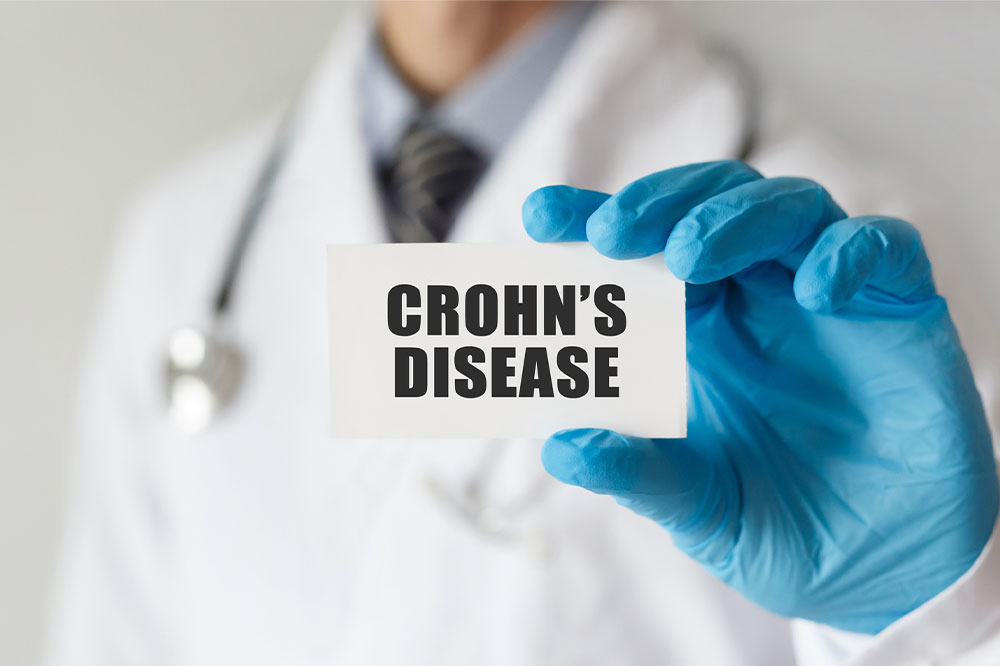17 Interesting Facts to Know About Crohn’s

Did you know that Crohn’s disease affects quite a few people, whether children or adults, in the country? But what is Crohn’s disease? Crohn’s disease is recognized as chronic Inflammatory Bowel Disease (IBD), which affects the digestive tract and causes irritation and inflammation. Usually, it develops at the start of the large intestine and primarily the small intestine. Today, let us enumerate some facts one needs to learn about this disease.
Statistics and how common this disease is
According to the Crohn’s & Colitis Foundation of America (CCFA), more than 700,000 people in the country are diagnosed with this disease. This whopping number has been increasing and is more in industrialized countries.
Who can be affected
Though it can affect an individual of any age, it may, however, develop in people between twenty and twenty-nine years. Also, people with a family history of IBD may develop this disease.
The root cause of Crohn’s disease is still unknown
The causes of Crohn’s disease are still unclear. However, researchers believe it is the amalgamation of three factors, such as hereditary or genetic factors, environmental factors such as pollution, meals, and infections, and an immune system that starts attacking the GI tissue.
Types
There are five types, and they are ileitis, ileocolitis, jejunoileitis, gastroduodenal, and granulomatous colitis. Each refers to the part of the GI tract which is affected most.
Symptoms vary in individuals
The symptoms of Crohn’s disease may vary from person to person. Usually, one of the first signs to appear is abdominal pain, but where that pain occurs precisely depends upon the affected area of the digestive tract. It may affect any part of the GI tract, including the mouth, stomach, and esophagus. Most people do not suffer from symptoms all the time. Sometimes the symptoms are at their worst, but people with Crohn’s disease can feel relatively normal during the remission period.
Remission phases and flares
People with Crohn’s disease pass through various flare-ups and remissions. The common symptoms of flare-ups are anemia, blood in the stool, fatigue, diarrhea, abdominal pain, which usually worsens after meals, and painful bowel movements. Crohn’s disease can manifest in other ways, such as eye inflammation, joint pain, and skin lesions.
Complications involved
The various complications of Crohn’s Disease consist of fistulas, malnutrition, ulcers, abscesses, intestinal obstruction, anal fissures, and inflammation in other body parts, such as the skin, eyes, and joints.
Certain foods can be triggers
Some foods can lead to flare-ups, but meals are not the only root cause of the disease; they are not entirely related to the meals or food one eats.
Undiagnosed for longer periods
Crohn’s often goes undiagnosed for extended periods. Therefore, if one is experiencing severe abdominal pain, diarrhea, and other GI symptoms, one should consult a healthcare provider immediately.
Massive impact on one’s life
The quality of life of people with Crohn’s disease is severely impacted as it starts at a young age and continues for the rest of their life. Therefore, it may become difficult for even the strongest person to manage and deal with it. People with Crohn’s disease also have to undergo multiple procedures and tests as part of the diagnosis and treatment options. Productivity at work also suffers, and social engagements can be stressful if one is experiencing pain from this disease.
Treatment options are available
There is no cure for Crohn’s disease, but treatment is available. The treatments can ease the inflammation, making the symptoms more manageable. Although this condition considerably impacts one’s quality of life, it is not fatal.
Various remedies
As mentioned earlier, the symptoms vary in the individuals. Therefore, the treatments are customized as per the severity of the symptoms exhibited by the patient. Crohn’s disease may be treated with various therapies such as biologics, steroids, and immunosuppressives. Recently, researchers have been looking for and working on new treatment options.
Surgery is rarely a cure
Some people with Crohn’s disease undergo surgery, which is used when a particular treatment is not successful and cannot be used to manage and treat the disease satisfactorily. However, surgery is often considered a temporary solution.
It is different from ulcerative colitis
Crohn’s disease and Ulcerative Colitis (UC) are different, though these diseases are both types of IBD and show similar symptoms. They are separated by the fact that Crohn’s can lead to inflammation in the GI tract ranging from mouth to rectum, while Ulcerative Colitis (UC) affects the rectum and large intestine.
Avoiding excess fiber may help
Strictures are created by Crohn’s disease, which makes it difficult for some food to pass through the digestive tract. Therefore, avoiding high-fiber foods may be a good idea. Also, a healthcare provider may recommend avoiding certain foods such as nuts, beans, popcorn, and whole-grain items.
Healthy sleeping habits may help
Crohn’s can be aggravated by poor sleep habits. Even when the disease is inactive, many people who have Crohn’s may experience fatigue and sleep disturbances. One should avoid irregular sleep patterns and sleep well for about seven to nine hours. Also, it would be best if one tries to sleep at the same time daily.
Reducing stress may help
Stress reduction is also helpful in reducing flares. For example, researchers have found that the quality of life of people with Crohn’s disease may be improved, and the chances of disease flares may be decreased with stress reduction activities. If comfortable, one could also join a support group and share their concerns with friends and family.
Conclusion
This post has explored some facts one must know to understand Crohn’s disease better. However, it is still suggested to research and explore more and follow only the healthcare provider for the recommended things to manage and treat this disease. This post intends only to expand knowledge about specific facts related to Crohn’s disease and is not any alternative to a healthcare professional’s advice.






